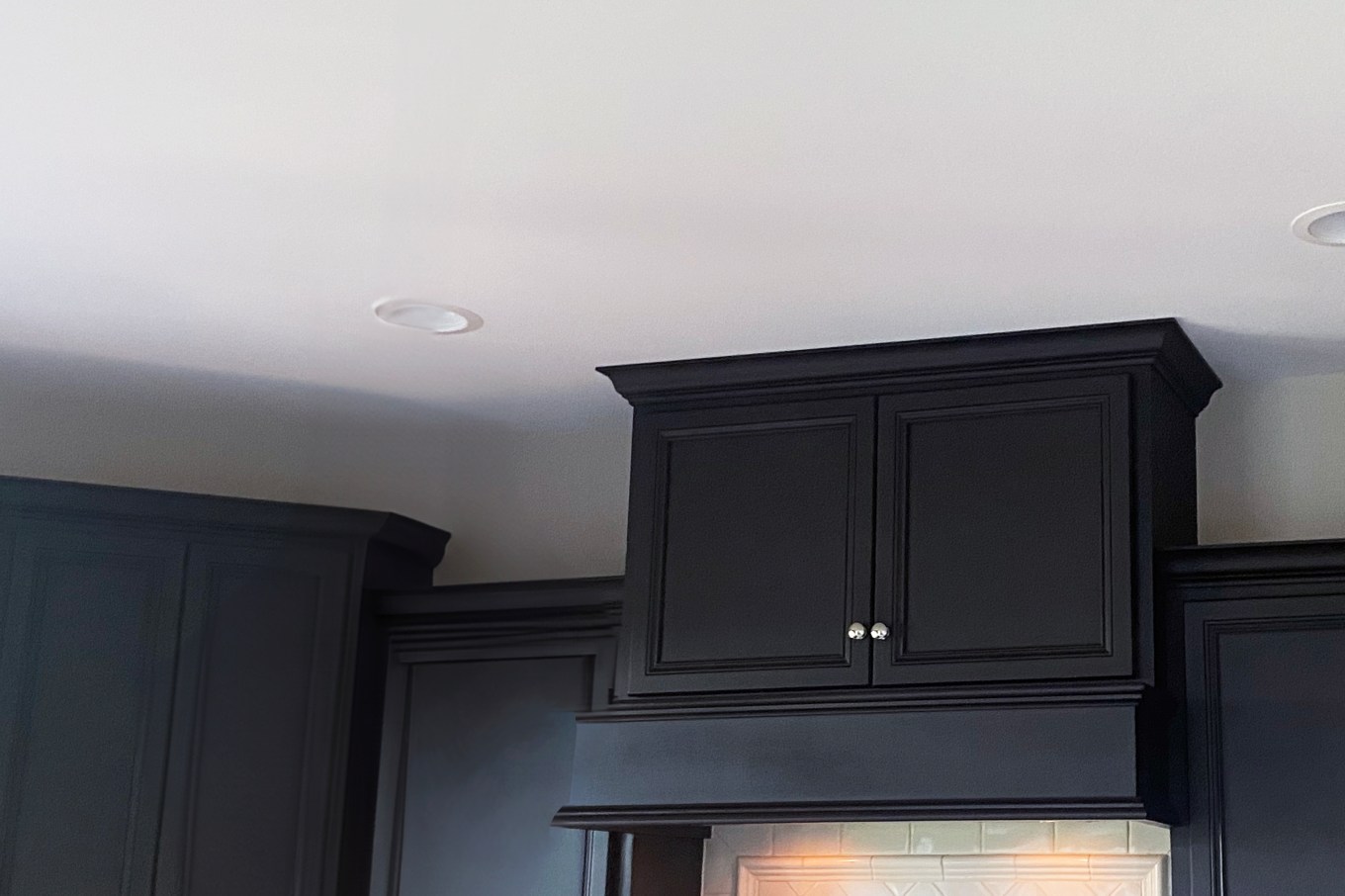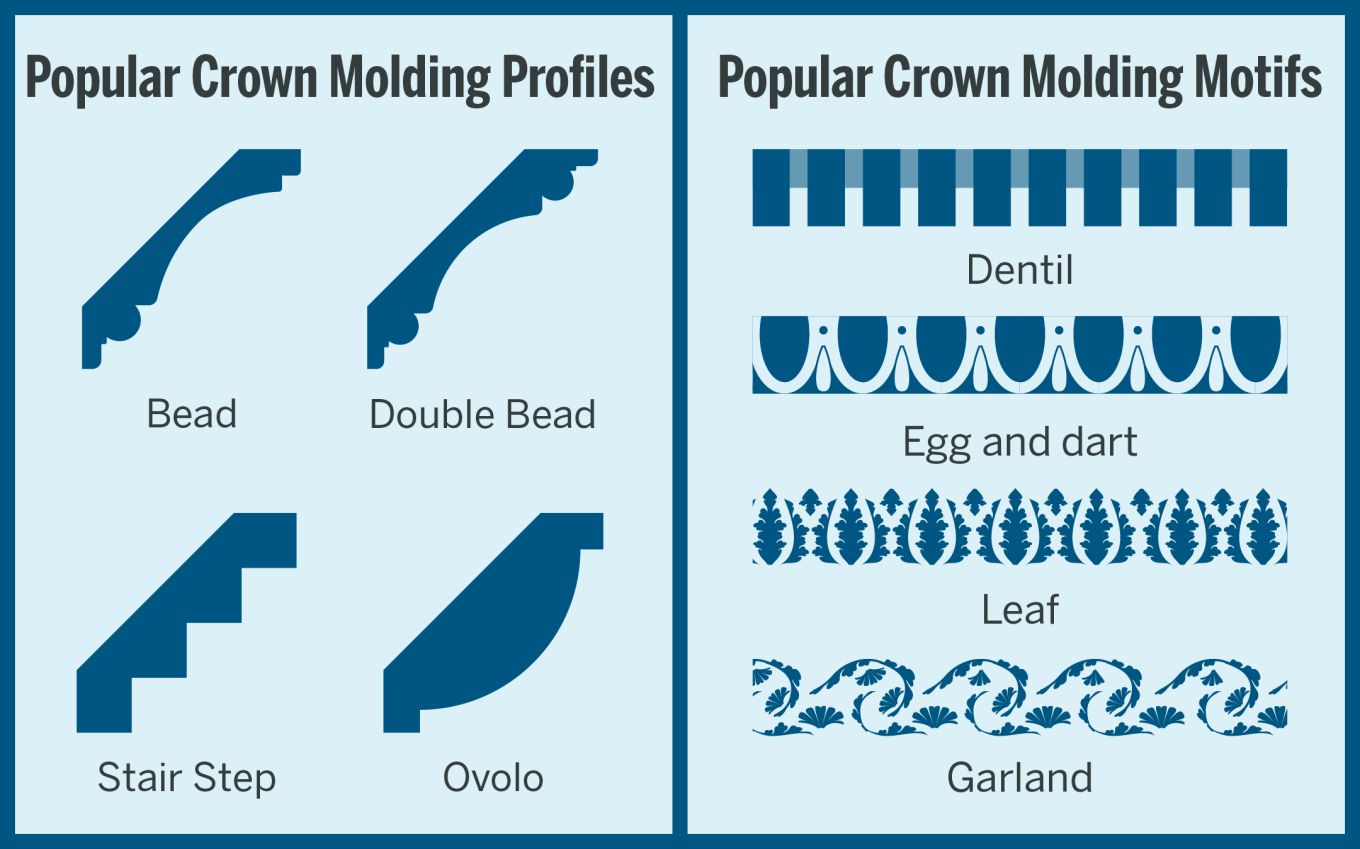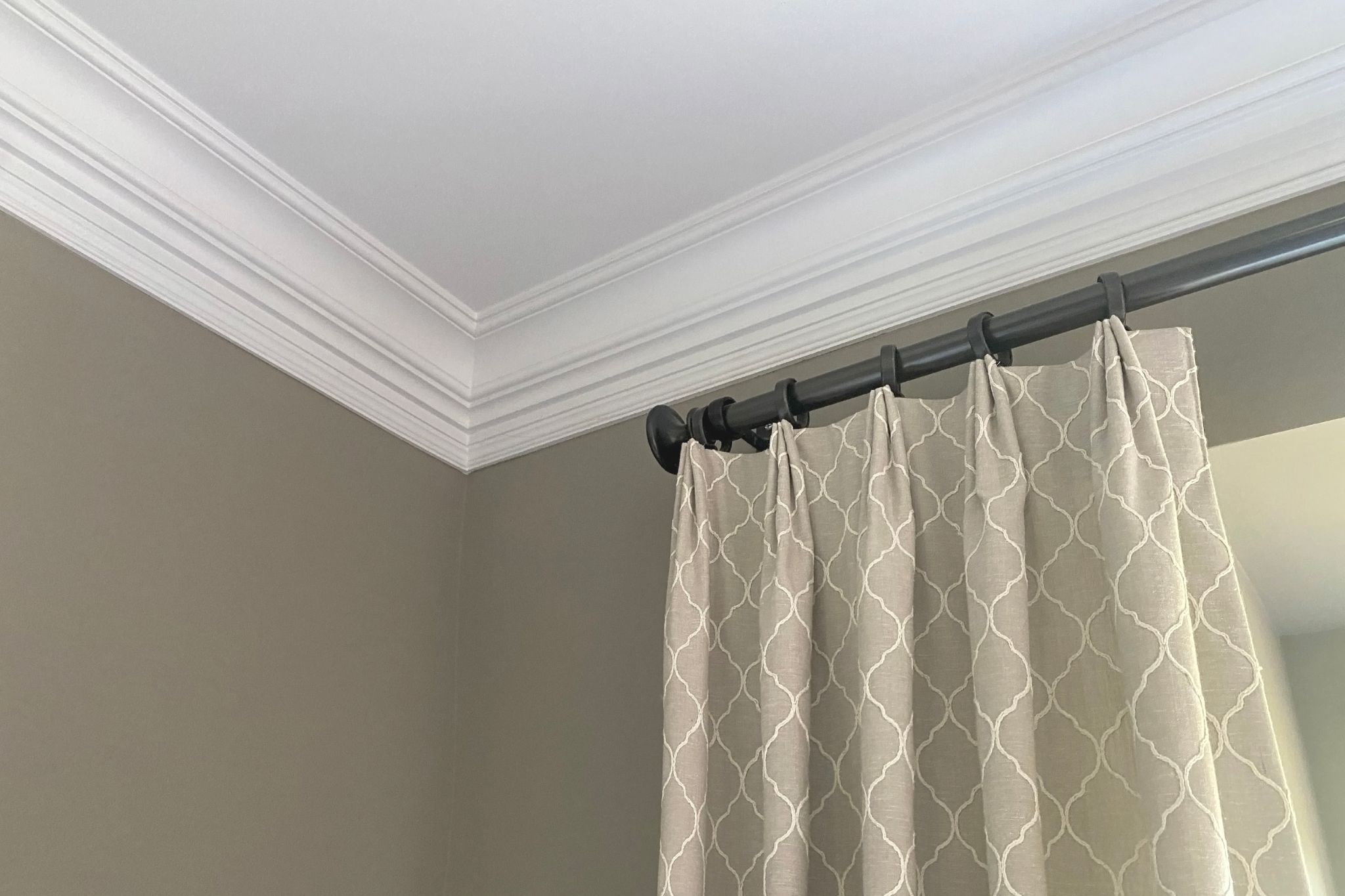Crown molding is a finishing touch that can add a dash of sophistication to a home. It’s both classic and versatile. Crown molding can be added as an enhancement during renovation or to give an older home a new look.
There are a few features to consider when deciding on crown molding styles for your home, like which shapes and sizes will fit the architectural style of the house. Here’s more about crown molding and a look at some common options.
What Is Crown Molding?
Crown molding is a decorative trim that bridges the gap between the walls and the ceiling, adding a smooth transition in the living space. It can also be placed around other areas, including windows, doors, and cabinets. It’s a finish that can turn a plain room into a sophisticated space.

With smooth curves, intricate designs, and various styles, it can add character and sophistication to your home.
Crown Molding Styles
Crown molding styles are as diverse as homeowners’ design preferences. Here are some of the most popular styles that can transform your space:
Traditional
Traditional crown molding epitomizes classic design. With its smooth curves and simple design, it complements a wide range of interior design styles, making it a versatile choice.
Craftsman
Craftsman-style crown molding is simple but detailed, with clean lines and solid materials. The geometric patterns are perfect for those who appreciate both symmetry and beauty.
Art Deco
If you're drawn to the glamour of the 1920s and 1930s, Art Deco crown molding might be your style. With bold geometric shapes, intricate patterns, and a touch of opulence, it's a great match for a home with a vintage feel.
Victorian
Victorian is all about intricate details, florals, and ornate patterns that add luxury and grandeur to your space. This choice is ideal for those who appreciate the detail and ornamentation of the style.
Mid-Century Modern
For a more contemporary and minimalistic approach, mid-century modern crown molding is a likely choice. With clean lines, simplicity, and a focus on functionality, it's a match for homes with a modern design aesthetic.
Farmhouse
Farmhouse style is all about warmth and rustic charm. The crown molding features clean lines and often incorporates wood, creating a cozy, welcoming atmosphere in your home — although you can still get the feel with synthetic materials.
Greek
If you appreciate the grace and symmetry of Greek architecture, you might consider Greek crown molding. It features classic elements such as columns, scrolls, and detailed patterns, which add a touch of the Mediterranean.
Arts and Crafts
The Arts and Crafts movement values craftsmanship and handmade elements. The crown molding embraces natural materials, making it ideal for homeowners who appreciate handcrafted details.
Features of Crown Molding

From subtle to elaborate, crown molding can be customized with various features to suit your design vision. Here are some noteworthy crown molding features to consider when elevating the aesthetics of your space:
- Bead and curve: A combination of rounded beads and graceful curves that creates a delicate and refined look.
- Dentil molding: Textured and eye-catching, with repeating rectangular blocks resembling small teeth, perfect for fine craftsmanship admirers.
- Egg & Dart: A timeless pattern featuring eggs and darts, both elegant and complex.
- Ornamental ovolo: Soft, rounded edges and a soothing, inviting appearance for a relaxed atmosphere.
- Double bead: Bold and eye-catching with two parallel bead features, making your design prominent.
- Leaf: Inspired by nature, incorporating detailed leaf patterns for an organic touch.
- Stair step: Architecturally intriguing with stepped, block-like designs, appealing to enthusiasts of precision and detail.
- Garland: Flowing, draped patterns, bringing an opulence to your space.
Materials for Crown Molding
Selecting the right material for your crown molding is as important as choosing the style and features. Different materials offer various looks and durability. Here are some common materials used for crown molding:
- Wood: Wood crown molding adds a sense of warmth and is easy to customize. It's an excellent choice for traditional and classic styles.
- MDF: MDF, or medium density fiberboard, is a budget-friendly option that can be painted to achieve the desired look. It's an ideal choice for those looking for a cost-effective solution.
- Plaster: Plaster crown molding is popular for ornate crown molding finishes. It can be molded to create intricate patterns and is often associated with high-end interior designs.
- Polyurethane: Polyurethane crown molding is a lightweight and durable option that closely resembles wood. It's easy to work with and suitable for various styles.
- Resin: Resin crown molding is a versatile material that can mimic the look of wood or other materials.
- Metal: Metal crown molding can add a touch of industrial or contemporary style.
Crown Molding Options: Factors to Consider
While choosing between the various crown molding styles and features will depend largely on your preference, you should be aware of other considerations when designing a room with this feature:
Architectural Style Compatibility
With certain crown molding designs influenced by architectural eras, you might think style compatibility rules are hard and fast.
This is rarely the case. The key is to complement the original design and the room's or building's overall aesthetic. If you have a pared-down interior with a minimalist touch, you might want to avoid highly detailed moldings, like dentil or beaded, and opt for a traditional molding type.
Room Size and Ceiling Height
The size and height of the room also factors into play a crucial role in choosing the right crown molding style. Some designs may make smaller rooms feel boxy and enclosed, others open and spacious.

For example, dentil moldings are often best suited to rooms with high ceilings, while cove molding can be used in many different settings.
Installation Complexity
Classic and cove molding may be simpler to install due to their straightforward profiles. Dentil molding, beaded molding, and especially Gothic molding can be more challenging to install due to their intricate designs, often requiring skilled craftsmanship.
Costs to Install Crown Molding: Materials and Labor
The average cost of materials and labor is $4 to $23 per linear foot. Of course, if your heart is set on high-end materials or a custom installation, the price can go up.
By installing crown moldings yourself, you may save $3 to $12 per linear foot on labor. However, before you grab your tools, be aware that you’ll need experience and knowledge as a carpenter. Installing crown molding involves working with compound angles. That requires patience, spatial skills, and the right tools. If you're up for the challenge, you could consider going for it. But you may want to leave the more intricate projects, like plaster molding or custom designs, to the professionals.
You’ll need to finish some crown moldings with painting and caulking. Pricing will vary depending on your project, but consider factoring these elements into your overall budget. Intricate crown molding designs may require more complex cuts and installation time, increasing expenses. Larger rooms often require more materials and more installation time, adding to costs.
Selecting the Right Crown Molding for Your Home
From the classic lines of traditional molding to the intricate beauty of ornate designs, crown molding offers myriad choices to match your architectural style and personal taste.
Consider factors such as room size, ceiling height, and installation complexity that can help match your selection to your home's character. Aim for a balance between materials, labor, and complexity of style that fits your home improvement budget. Whether you're a seasoned DIY enthusiast or prefer the touch of a professional, crown molding can create a refined look in your home.
